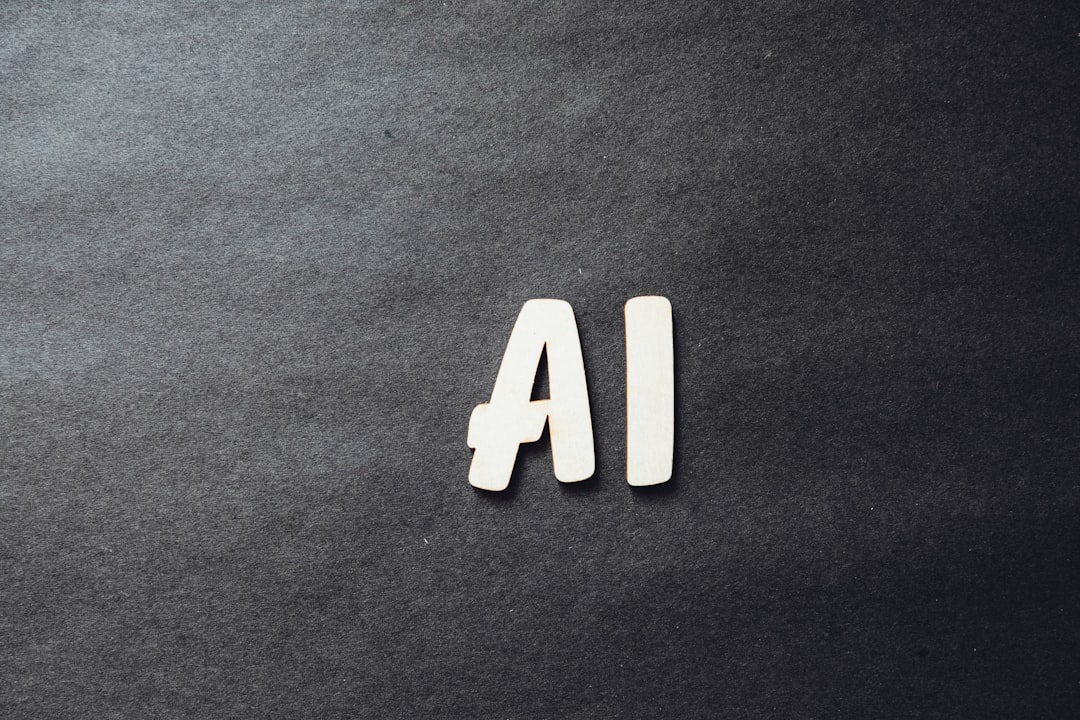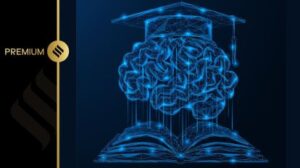The concept of the smart home is undergoing a profound transformation. For years, the “smart” in smart home primarily meant connected and programmable. Devices could be controlled remotely via an app or automated through simple “if-this-then-that” (IFTTT) rules. While convenient, this was a reactive system, entirely dependent on user input and predefined schedules. Today, we are witnessing the dawn of the truly intelligent home, powered by advanced artificial intelligence and machine learning. This new paradigm is shifting from reactive automation to proactive, predictive, and personalized environmental control. Recent Smart Home AI News highlights a significant trend: devices are no longer just following orders; they are learning, anticipating, and acting on our behalf to create a more efficient, secure, and comfortable living space. This evolution is most apparent in core home systems like HVAC, where AI is turning simple thermostats into sophisticated energy managers, but its influence is rapidly expanding to every corner of our connected lives.
From Connected to Cognitive: The New Era of Smart Home AI
The fundamental difference between a merely “smart” device and an “intelligent” one lies in its ability to learn and adapt. The first generation of smart devices operated on static logic. You could set your thermostat to 20°C at 7 AM, and it would obey, regardless of whether it was a frigid winter morning or an unseasonably warm one. The next generation of AI-powered devices operates on a completely different level, creating a dynamic and responsive home environment.
Key Capabilities of Modern Home AI:
- Predictive Analysis: Advanced AI algorithms can now ingest vast amounts of data—historical usage patterns, local weather forecasts, real-time occupancy data from sensors, and even the thermal properties of your home—to predict future needs. An intelligent thermostat, for example, won’t just turn on the heat at a set time; it will calculate the precise moment it needs to begin warming the house to reach your desired temperature by that time, optimizing for energy efficiency. This is a major development in AI for Energy / Utilities Gadgets News.
- Behavioral Learning: These systems learn the unique rhythms of a household. They recognize when you typically leave for work, when the kids get home from school, and which rooms are occupied at different times of the day. This goes beyond simple geofencing. The AI builds a complex model of your life, allowing it to make nuanced decisions, such as slightly lowering the temperature in an unused home office during the day or pre-cooling the living room before your usual evening relaxation time.
- Sensor Fusion and Contextual Awareness: The true power of the intelligent home is realized when devices stop acting as isolated units and start communicating. This is a central theme in AI Sensors & IoT News. An AI hub can fuse data from multiple sources: motion sensors, door/window contacts, smart lighting, and even wearables. For instance, if your smartwatch (a key topic in Wearables News) detects you’ve entered a sleep state, it can signal the home AI to lower the thermostat, dim the lights, lock the doors, and arm the security system. This multi-modal understanding of context is what separates a basic smart home from a cognitive one.
The Interconnected AI Ecosystem: A Symphony of Smart Devices
The intelligence revolution isn’t happening in a vacuum. The most significant advancements are emerging from the interplay between different categories of AI-enabled gadgets. A central AI, often embodied by a smart speaker or a dedicated hub, acts as the conductor of an orchestra of specialized devices, each contributing its own data and capabilities. This collaborative approach creates a whole that is far greater than the sum of its parts.
How Different AI Devices Collaborate:
Imagine a typical evening scenario in an AI-powered home. Your car, a key piece of Autonomous Vehicles News, signals its approach to your home. The AI system responds by:

- Adjusting the thermostat to your preferred evening temperature.
- Turning on the entryway and living room lights, a core feature discussed in AI Lighting Gadgets News.
- Instructing your smart oven, a highlight in AI Kitchen Gadgets News, to begin preheating for dinner.
- Disarming the exterior security cameras, a constant focus of AI Security Gadgets News, while keeping interior monitoring active until you enter.
This seamless chain of events is orchestrated without a single command from you. The system anticipates your needs based on learned patterns and real-time data. This ecosystem extends to every facet of home life. Robotics Vacuum News often features models that learn your home’s layout and automatically start cleaning a room moments after its occupants have left, coordinating with motion sensors to work efficiently and unobtrusively. Similarly, AI Pet Tech News showcases smart feeders and climate controls that adjust based on your pet’s activity levels, ensuring their comfort even when you’re not home.
The Role of Edge vs. Cloud Computing:
A critical technical aspect driving this evolution is the debate between cloud-based AI and on-device “edge” AI. This is a recurring topic in AI Edge Devices News.
- Cloud AI: Processes data on powerful remote servers. This allows for incredibly complex machine learning models and continuous updates. Many leading AI Assistants News items focus on the expanding capabilities of cloud-powered assistants. The downside is a reliance on an internet connection and potential privacy concerns, as personal data leaves the home.
- Edge AI: Performs processing directly on the device itself (e.g., within a security camera or thermostat). This offers significant advantages in speed and privacy. AI-enabled Cameras & Vision News frequently reports on cameras that can perform person and package detection on-device, without sending video streams to the cloud. The challenge is the limited processing power of small, low-energy devices.
The future is likely a hybrid model. Sensitive or time-critical tasks like security alerts will be handled at the edge, while long-term behavioral learning and complex predictive modeling will leverage the power of the cloud. This hybrid approach ensures both responsiveness and deep intelligence.
Implications and Future Trajectories: Beyond Convenience
The integration of predictive AI into our homes has implications that extend far beyond simple convenience. It touches on sustainability, accessibility, and wellness, creating new opportunities and challenges.
Sustainability and Efficiency:
The most immediate and measurable benefit is energy efficiency. AI-powered HVAC and lighting systems can reduce household energy consumption by 15-25% or more by eliminating waste. They heat and cool only occupied spaces, adjust to changing weather in real-time, and identify inefficiencies in a home’s thermal envelope. This has a direct impact on utility bills and a broader positive effect on the environment, a key driver in Smart City / Infrastructure AI Gadgets News.
Health, Wellness, and Accessibility:
The smart home is becoming a proactive partner in our well-being. The latest Health & BioAI Gadgets News and AI Sleep / Wellness Gadgets News detail systems that integrate with fitness trackers and smart beds. An AI can create an optimal sleep environment by adjusting temperature, air quality, and ambient noise throughout the night based on your sleep stages. For accessibility, the impact is even more profound. AI for Accessibility Devices News reports on systems that can learn the routines of elderly individuals or those with mobility issues, automatically adjusting lighting, opening doors, and providing voice-activated control over their entire environment, offering a new level of independence.
The Future of Human-Home Interaction:
Looking ahead, the way we interact with our homes will continue to evolve. While voice assistants are currently dominant, we are seeing the rise of more passive and intuitive interfaces. AI Personal Robots will offer mobile assistance, and developments in Neural Interfaces News hint at a future where our homes might respond directly to our intentions. The data from Smart Glasses News and AR/VR AI Gadgets News could one day provide the home AI with a first-person view of our needs, allowing it to overlay information or controls directly onto our field of vision. The home will become less a collection of devices to be commanded and more an ambient, intelligent entity that seamlessly supports our lives.
Recommendations and Best Practices for Consumers

Navigating the rapidly evolving world of smart home AI can be daunting. As devices become more intelligent and interconnected, consumers need to be more discerning. Here are some key considerations and best practices:
Pros and Cons of an AI-Powered Home:
- Pros: Unmatched convenience, significant energy savings, enhanced security through intelligent monitoring, and improved accessibility and wellness. The ability of the system to proactively manage the home reduces mental load.
- Cons: High initial cost, potential for ecosystem lock-in (e.g., being tied to Google, Amazon, or Apple), significant privacy concerns regarding data collection, and a reliance on complex technology that can be difficult to troubleshoot.
Actionable Tips for Building an Intelligent Home:
- Prioritize the Ecosystem: Before buying individual devices, decide on a primary ecosystem (e.g., Google Home, Apple HomeKit, Amazon Alexa). This ensures better interoperability and allows for more powerful, cross-device automations.
- Scrutinize Privacy Policies: Understand what data a device collects, where it is stored, and how it is used. Favor companies that offer robust privacy controls and prioritize on-device processing (edge AI) for sensitive tasks.
- Start with High-Impact Areas: Begin your smart home journey with devices that offer the most significant return on investment. An AI-powered thermostat is an excellent starting point due to its direct impact on energy bills. Smart lighting and security cameras are also high-value additions.
- Secure Your Network: An intelligent home is only as secure as the network it runs on. Use strong, unique passwords for your Wi-Fi and all smart device accounts, enable two-factor authentication, and keep firmware updated to protect against vulnerabilities.
Conclusion: The Dawn of the Ambient Home
The latest Smart Home AI News confirms we are moving decisively beyond simple remote control and into an era of ambient intelligence. The proliferation of AI, from thermostats that predict our comfort needs to security systems that can distinguish a friend from a stranger, is creating a home that is not just connected, but cognitive. This intelligent ecosystem promises a future of unparalleled efficiency, personalization, and security. While challenges around privacy, cost, and interoperability remain, the trajectory is clear. The home of the future will be a silent, proactive partner, using a symphony of interconnected, learning devices to manage our environment, conserve resources, and enhance our well-being, often without us ever needing to issue a command.










